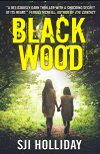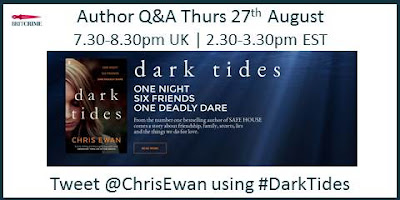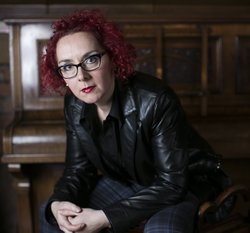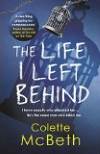My spooky thriller Book of Shadows is just 99p in the UK today, Tuesday 11/8 ($3.99 US and worldwide).
"A wonderfully dark thriller with amazing "Is-it-isn't-it?"suspense all the way to the end. Highly recommended." - Lee Child
Book of Shadows is about a cynical Boston cop who teams up with a mysterious Salem witch to solve what looks like a Satanic murder.
It’s fascinating to me how when you write a book, everyone always assumes it’s about you. Few people get that sometimes, if not most times, when you write a book it’s about getting OUT of you. Just like reading is, right?
So naturally everyone who reads it assumes that I’m a witch (that’s with a "w"). Oh, the interviewers don’t come right out and say it, but you know that’s what they’re asking.
Well, I’m not. Really. Not really. No more than any woman is a witch.
But I can’t deny that writing Book of Shadows was a really excellent opportunity for me to indulge some of my witchier nature. I wanted to dive right in and explore some of those things that make some men – and a lot of women – uncomfortable with feminine power, and feminine energy, and feminine sexuality, and feminine deity.
I was working up to this book for quite a while. I’ve been around practicing witches most of my life. That’s what happens when you grow up in California, especially Berkeley. Actually the Berkeley part pretty much explains why I write supernatural to begin with, but that’s another post. Those of you who have visited Berkeley know that Telegraph Avenue, the famous drag that ends at the Berkeley campus, is a gauntlet of clothing and craft vendors, artists, and fortunetellers, forever fixed in the sixties. Well, look a little closer, and you’ll see just how many pagans, Wiccans, and witches there actually are.
I’ve walked that gauntlet thousands of times in my life. It does something to your psyche, I’m telling you.
There was also the Renaissance Pleasure Faire, where I spent many summer days in my interestingly misspent youth. Renaissance Faires are teeming with witches (check out the Fortune Tellers’ Grove next time if you don’t believe me).
So even though I don’t actually practice, not in an organized covenish kind of way, I’ve been to a ceremony or two, and you could say I’ve been researching this book for quite some time. In fact, I think I’ve known I was going to write this book ever since I first saw a "Calling of The Corners," a Craft ceremony which is one of the ritual scenes I depict in "Book of Shadows." It’s one of the most extraordinary spiritual experiences I've ever had -- such elemental, feminine power.
And in everyday life, there some things that are just useful to know about the Craft.
I’m not much one for spells, I’m more of a meditator. But when I had to kick my evil tenants out of my rental house? A cleaning service was just not enough. You better believe that the second the locksmith was done changing the locks, I was down at the witch supply store, buying black and white candles (for protection and cleansing), and sage (smudge it for purification). I opened every window and swept the whole house widdershins (to the left, to dismiss) with a new broom dipped in salt and rosemary to dispel all lingering energy. Ritual works, and it doesn’t really matter what accoutrements you use; it’s really about the intention: in this case to cleanse, heal, and start over fresh.
Another concept of the Craft that I’ve always found particularly useful is Maiden, Mother, Crone. Those are the three aspects of the Goddess, and also the three phases of the moon, corresponding colors white, red and black. They represent the three cycles of a woman’s life – youth, womanhood and age – but women also pass through all three aspects every month when they’re menstruating, and knowing that has saved my life (and the lives of many of those around me) many a time.
The time right after your period is Maiden: you have a rush of estrogen, so you’re glowing, you’ve just dropped all that water weight, you have a ton of energy, and you’re – well, up for it. And men can sense it. Best time to snag a partner, although your choices might not be exactly the best in this phase of the cycle.
The Mother (also called Queen) phase of the month is around ovulation. You’re powerful, grounded, and can get a lot done, especially creatively, because of the pregnancy connotations. It’s a sexy time in a different way than Maiden, because there’s the extra knowledge
that yes, you really can get pregnant right now.
The Crone phase is raging PMS and the "death" that a period often feels like. Wise people know to avoid you at this time unless they really want a faceful of truth, and I try not to schedule meetings, especially with men, when I’m in this phase. Best for me to be solitary and contemplative. And contain the damage.
But the things that come out of your mouth during this phase are the deep truth, even if they’re not pleasant, and if you remember to breathe, put the knife down, and pay attention to what you’re feeling and saying, you can learn a lot about your life and what you really need to be doing. Also your dreams will tend to be the most powerful, vivid, and significant in this phase. I know mine are.
I appreciate the earth/nature centeredness of the Craft. I like to be aware of whether the moon is waxing or waning, and focus on bringing things into my life during the waxing, and letting go of things (or people!) in the waning. And I like knowing that there is extra power and magic at the Solstices and Equinoxes; that knowledge makes me stop at least four times a year to consider what I really want to manifest in my life.
(Obviously I used all of that Moon knowledge and more in the Huntress Moon series, too…)
Let’s face it: I also like the clothes. With my hair, I’ll never be able to pull off the tailored look. I love lace and fishnets and velvet and sparkles and corsets and big jewelry. I love the candles and the scents and that every day has a color (today is white, if you’re wondering).
And there is another aspect of the Craft that has been truly important to me, spiritually. It’s about balance. I have never, ever bought the idea that God is male. It runs contrary to my entire experience of reality. I love you guys, really I do, but you’re only half the equation. I can’t see how an ultimate power could be anything but BOTH male and female. So the notion of a Goddess, in all Her forms, to me, completes the equation.
And a Supreme Being who likes velvet and fishnets? Even better.
So how about you? What’s your take on witches? Are you familiar with the way witchcraft is actually practiced, or is that whole world completely mysterious to you? Or do you do the odd spell or two yourself?
-- Alexandra Sokoloff
Book of Shadows
Homicide detective Adam Garrett is already a rising star in the Boston police department when he and his cynical partner, Carl Landauer, catch a horrifying case that could make their careers: the ritualistic murder of a wealthy college girl that appears to have Satanic elements.
The partners make a quick arrest when all evidence points to another student, a troubled musician in a Goth band who was either dating or stalking the murdered girl. But Garrett's case is turned upside down when beautiful, mysterious Tanith Cabarrus, a practicing witch from nearby Salem, walks into the homicide bureau and insists that the real perpetrator is still at large. Tanith claims to have had psychic visions that the killer has ritually sacrificed other teenagers in his attempts to summon a powerful, ancient demon.
All Garrett's beliefs about the nature of reality will be tested as he is forced to team up with a woman he is fiercely attracted to but cannot trust, in a race to uncover a psychotic killer before he strikes again.
"Sokoloff successfully melds a classic murder-mystery/whodunit with supernatural occult undertones." - Library Journal
"Compelling, frightening and exceptionally well-written, Book of Shadows is destined to become another hit for acclaimed horror and suspense writer Sokoloff. The incredibly tense plot and mysterious characters will keep readers up late at night, jumping at every sound, and turning the pages until they've devoured the book." - Romantic Times Book Reviews
"Fast-paced with strong characterizations, fans will enjoy this superb thriller, as Adam and the audience wonder if The Unseen could be the killer." - Publisher's Weekly
"A wonderfully dark thriller with amazing is-it-isn't-it suspense all the way to the end. Highly recommended." - Lee Child
















